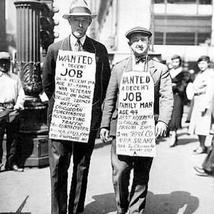Inter War Years 1919 to 1939

During this unit we will study the following content:
- the diplomatic attempts to maintain peace after WW1
- the factors that led to the rise of authoritarian regime after WW1
- the policies of totalitarian states leaders and how they transformed their country and affect international relations.
- analysis and interpretation of secondary and primary sources
- analyze the failure of peace-keeping attempts between WWI and WWII
- analyzing cause and effect - explain the reasons for the rise of Mussolini and Hitler in the 1920's/1930's
- writing source based responses
The Impact of the Great War
Most of the original members of the new League of Nations were non-European nations, demonstrating the global effect of the war. The Treaty of Versailles was unsuccessful in forging a lasting peace. The U.S, fearing involvement in a global conflict refused to join the League; this weakened the league. The Treaty brought with it more problems than solutions.
Germany was angered and humiliated by the war guilt clause and the reparations they could barely afford to pay. Other European countries were outraged by their failure to win independence. Italy and Japan felt the treaty should have awarded them additional territory. The unfinished issues of the Treaty of Versailles laid the groundwork for a second world war.
The cost of the war was even greater on European countries. The war eliminated an entire generation of Europeans with deaths totaling around 9-10 million and 21 million more were injured. Genocide reduced the European population even further due to the massacre of thousands of Christian Armenians by the Ottomans from 1915-1919. Deaths were not the only problem, the economy was also suffering. Economic devastation plagued Europe after the war. The finances of the European nations were depleted and many farms and towns were destroyed.
Germany was angered and humiliated by the war guilt clause and the reparations they could barely afford to pay. Other European countries were outraged by their failure to win independence. Italy and Japan felt the treaty should have awarded them additional territory. The unfinished issues of the Treaty of Versailles laid the groundwork for a second world war.
The cost of the war was even greater on European countries. The war eliminated an entire generation of Europeans with deaths totaling around 9-10 million and 21 million more were injured. Genocide reduced the European population even further due to the massacre of thousands of Christian Armenians by the Ottomans from 1915-1919. Deaths were not the only problem, the economy was also suffering. Economic devastation plagued Europe after the war. The finances of the European nations were depleted and many farms and towns were destroyed.
The League of Nations
|
|
|
The Wall Street Crash & The Great Depression

Key Points:
- 1929 - the Wall Street stock market crashed. Shareholders and businesses lost millions of dollars, industrial production dropped by 45% and 5,000 banks went out of business.
- By 1932 America was in the greatest economic depression in its history. 13 million people were unemployed.
- The American economy was weak for 5 main reasons: over-production, unequal distribution of wealth, weaknesses in the banking system, high import tariffs on American goods, and too much speculation on the stock market.
- When the stock market collapsed, America recalled its loans to European countries. This had a devastating impact, causing a world financial crisis.
|
Background Causes in America
a) Overproduction i) Agricultural ii) Factories b) Weaknesses of the banking system c) Speculation d) An uneven distribution of income e) The Wall St. Crash 2) Background Causes in Europe b) Destruction of WWI i) Germany unable to pay reparations ii) Great Britain and France unable to pay war debts to US |
Worldwide effects
a) Overproduction of agricultural goods caused drop in prices, hurting Latin American and African economies based on one or two cash crops b) Tariffs put in place to protect domestic businesses, caused a decline in world trade c) Widespread unemployment as businesses failed due to decline in trade d) Inflation of prices, especially in Germany |
Responses
a) Social welfare programs i) Governments push reforms that help relieve suffering caused by Depression in The U.S and Britain ii) Social Security, soup kitchens/bread lines, welfare b) Rise of Fascism i) Italy, Germany, Japan, Spain ii) Attractive to people hurt by Depression iii) Leaders stressed taking drastic measures to overcome economic decline, renewed interest in building military and becoming aggressive |
Crash Course: The Great Depression
Characteristics of Fascism
A form of extreme right-wing ideology.
- It celebrates the nation or the race as an organic community transcending all other loyalties
- Powerful and continuing nationalism.
- Constant use of patriotic mottos, slogans, symbols, songs, etc.
- Flags are seen everywhere.
- Fascism seeks forcibly to subordinate ALL aspects of society through a totalitarian state.
- It uses organized violence to suppress opposition.
- Accepts the tenets of Social Darwinism.
- Credere! [to believe]
- Obbedire! [to obey]
- Combattere! [to fight]
- Mussolini often referred to his goal of returning the greatness of the Roman Empire to Italy.
- Mussolini and Hitler often dressed in military style uniform in public.
- Both heavily rearmed and adopted expansionist policies.
- Traditional gender roles are made more rigid
- Note that Italy was not as ferocious as Nazi Germany in this respect regarding the Jews.
- The enemy could be liberals, communists
- Because of the fear of enemies and the need for security, the people are persuaded that human rights can be ignored out of “need.”
- People look the other way or even approve of torture, summary executions, long incarcerations of prisoners, assassinations, etc.
